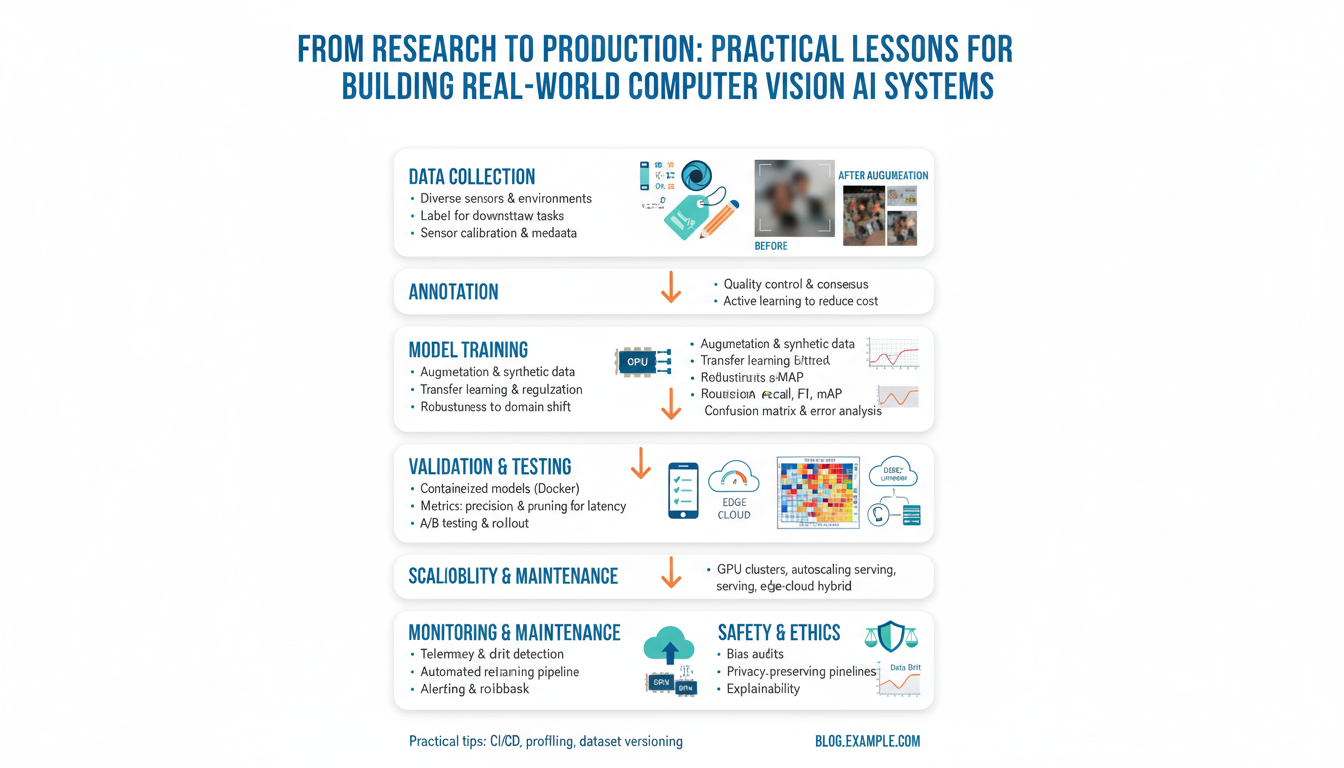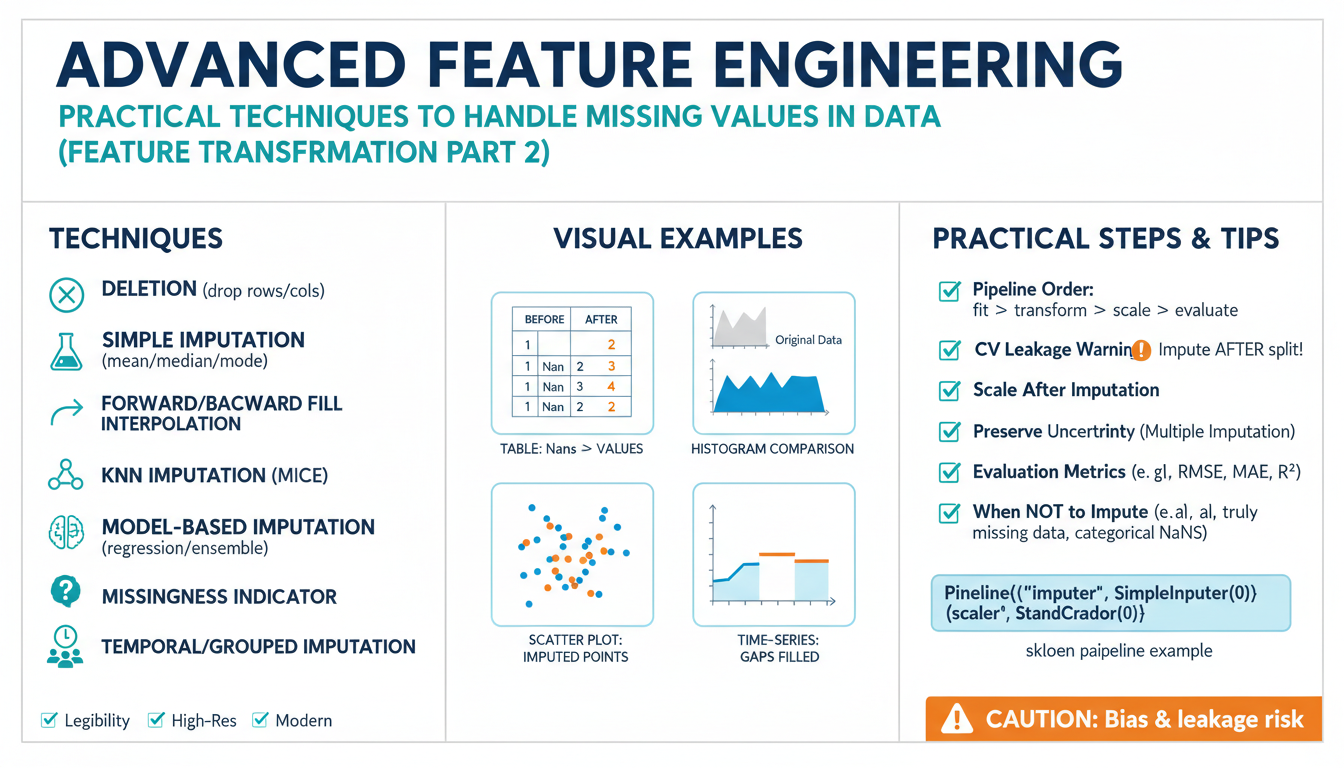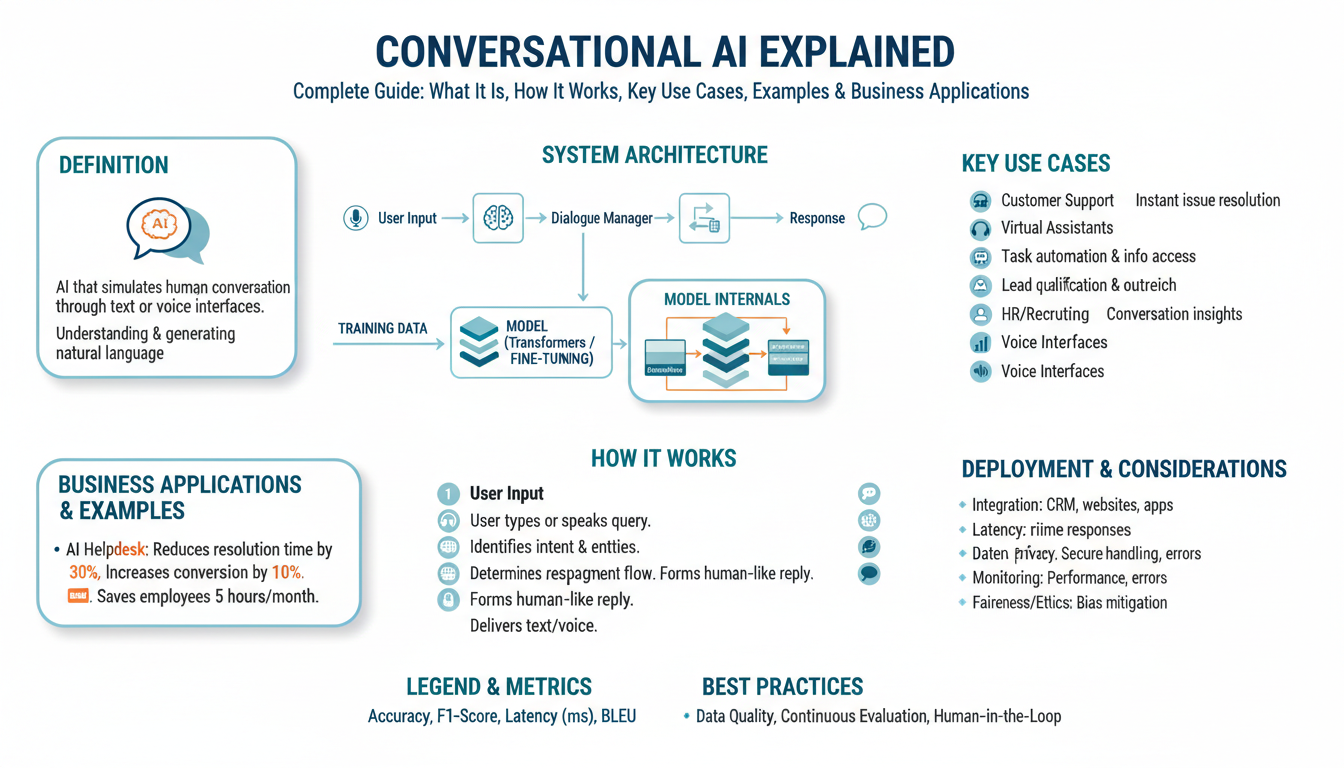Understanding Your Business Needs and Goals
Before selecting a conversational AI platform, it is crucial to first take a deep dive into your business’s unique needs and goals. A one-size-fits-all solution is rare in the fast-evolving realm of artificial intelligence. Granular understanding of your organization—its structure, target audience, operations, and future aspirations—is essential for a successful AI implementation.
Step 1: Map Out Key Objectives
Begin by clearly defining what you want to achieve with conversational AI. Are you aiming to improve customer service experiences, streamline internal communications, boost lead generation, or provide 24/7 support? Specific goals provide a strong foundation for evaluating potential platforms. For example, a retail business might prioritize AI platforms that excel in personalized shopping recommendations, while a healthcare provider may require HIPAA-compliance for data privacy and patient interactions.
Step 2: Analyze Current Pain Points
Document any pain points your business encounters in its current communication channels. These could include high call volumes, slow response times, common customer complaints, or inconsistent internal knowledge sharing. Quantifying these pain points and identifying patterns can help determine which AI features or integrations will bring the most value. For instance, McKinsey highlights that understanding operational bottlenecks is key to unlocking value through automation.
Step 3: Segment Your Users and Touchpoints
Different parts of your business may interact with customers, vendors, or employees in distinct ways. Create user personas and outline all critical touchpoints—be it live chat, voice calls, social media, or mobile apps. This mapping ensures the AI solution provides appropriate coverage for every interaction. For instance, a SaaS provider might require integration with both Slack and email for internal support, while a bank may demand seamless omnichannel presence across web chat, phone, and mobile apps.
Step 4: Determine Integration and Scalability Requirements
Assess the technology stack your business currently relies on. Does your ideal conversational AI platform need to integrate with existing CRM systems, ERP software, marketing automation tools, or cloud platforms? Scalability matters as well—consider not just present communication volumes, but also growth projections. According to Gartner’s Magic Quadrant for Enterprise Conversational AI Platforms, integration and scalability are top decision factors for long-term AI success.
Step 5: Prioritize Compliance and Security
Regulatory needs vary by industry and region. If you operate in sectors such as finance, healthcare, or government, pay special attention to platforms that offer robust compliance features like HIPAA, GDPR, or PCI DSS support. Neglecting these considerations can result in severe penalties and erode client trust.
In conclusion, investing time to holistically understand your business needs and objectives will empower you to select a conversational AI platform that not only addresses your current challenges, but also sets the stage for future innovation.
Key Features to Look For in a Conversational AI Platform
When selecting a conversational AI platform, it’s vital to understand the essential features that contribute to an effective, scalable solution. A well-chosen platform doesn’t just automate customer interactions; it enhances brand reputation and operational efficiency. Here are the most pivotal features to evaluate:
Natural Language Processing (NLP) Capabilities
The foundation of any conversational AI platform lies in its NLP prowess. Natural Language Processing enables the system to parse, interpret, and respond to human language in a way that feels authentic. Look for platforms with multi-lingual support, contextual understanding, and sentiment analysis. For example, advanced NLP can distinguish between a customer’s frustration and praise, adjusting responses accordingly to improve user satisfaction.
Omnichannel Integration
Modern businesses need to be where their customers are. A solid conversational AI platform should seamlessly integrate with multiple communication channels, such as websites, social media, messaging apps, and even voice assistants. Consider platforms that allow centralized management of conversations across all channels. Gartner highlights that true omnichannel capability ensures consistent and uninterrupted user experience, regardless of the chosen communication path.
Customization and Scalability
Your business is unique, and your AI solution should reflect that. The right platform offers deep customization options—from designing conversation flows to integrating industry-specific vocabulary and tone. Scalability is equally important: as your business grows, your AI should adapt quickly, being capable of handling increased usage without compromising performance. Providers often offer tiered services, which let you seamlessly upgrade functionalities as your needs evolve. Review this guide from Harvard Business Review on scaling AI responsibly.
Advanced Analytics and Reporting
Comprehensive analytics transform raw conversation data into actionable insights. A platform with robust reporting tools allows you to track user engagement, satisfaction rates, conversation success, and drop-off points. For example, you might find that users abandon conversations at a particular step—detailed analytics help you identify and fix these friction points. According to Emerj, data-driven tweaks are essential for ongoing optimization and achieving higher ROI.
Security and Compliance
Protecting customer data is non-negotiable. Ensure the AI platform complies with privacy regulations relevant to your industry, such as GDPR for companies operating in Europe or the HIPAA standard for healthcare organizations in the US. Look for end-to-end encryption, secure data storage, and customizable access controls to safeguard sensitive information.
Seamless Integration with Existing Systems
The best conversational AI platforms can plug directly into your CRM, ecommerce back-end, or helpdesk software, reducing manual work and streamlining workflows. For example, when a chatbot accesses your CRM, it can tailor responses based on previous customer interactions. This integration is crucial for creating a context-rich experience. Explore platforms that offer well-documented APIs and third-party app marketplaces, as highlighted by VentureBeat.
These core features, when considered together, empower businesses to choose a conversational AI platform that is not just technologically sound but also adaptable, secure, and tailored for real-world customer engagement. Always pilot your shortlisted solutions and involve end users in the evaluation process to ensure the platform matches your organizational needs and customer expectations.
Comparing Popular Conversational AI Providers
When comparing popular conversational AI providers, it’s crucial to understand the unique strengths, weaknesses, and primary use cases of each platform. There is no one-size-fits-all solution, and the right choice depends on your business needs, technical capabilities, and strategic objectives. Below, we analyze the most prominent conversational AI platforms and provide practical examples and guidance for decision-making.
1. Google Dialogflow
Dialogflow by Google Cloud is renowned for its robust natural language understanding (NLU) capabilities and integration with Google’s ecosystem. It’s widely used for voice assistants (Wired), customer support chatbots, and conversational IVR systems. Dialogflow offers pre-built agents for various industries, which can accelerate development time.
- Strengths: Seamless integration with Google products (e.g., Google Assistant, Maps), powerful machine learning models, easy multilingual support.
- Weaknesses: Some advanced features require a learning curve; pricing can escalate with high usage.
- Example: A retail company automates its customer service channels by integrating Dialogflow with its e-commerce app, enabling voice and text-based support across devices.
2. Microsoft Azure Bot Service
The Azure Bot Service part of Microsoft’s AI suite, is favored by enterprises for its scalability, security, and seamless integration with business tools like Microsoft Teams and Dynamics 365. According to Gartner, Azure’s enterprise-grade infrastructure and compliance standards make it a preferred choice for industries with stringent data requirements.
- Strengths: End-to-end security, compliance, support for enterprise integrations, robust analytics through Azure’s ecosystem.
- Weaknesses: Steeper initial setup, may require in-depth Azure knowledge for optimal deployment.
- Example: A healthcare provider leverages Azure Bot Service to offer virtual patient consultations integrated with doctors’ schedules, plus automatic record updates in its healthcare management systems.
3. IBM Watson Assistant
IBM Watson Assistant stands out for its strong AI capabilities and industry-specific solutions, especially in banking and insurance (Forbes). Watson offers advanced intent recognition, omnichannel support, and pre-trained content for specialized customer interactions.
- Strengths: Pre-built industry models, high-quality multilingual processing, extensive compliance support (PCI, GDPR, HIPAA).
- Weaknesses: Can be more expensive for small businesses; setup may require IBM expertise.
- Example: An insurance company deploys Watson Assistant on its website and mobile app, guiding customers through claims filing and providing 24/7 automated support.
4. Amazon Lex
Amazon Lex, part of the AWS ecosystem, focuses on chatbot and voice bot development with deep learning-driven ASR (Automatic Speech Recognition) and NLU. Its integration with the AWS family allows for easy connection to other cloud services and infrastructure (InfoQ).
- Strengths: Best-in-class voice technology, straightforward integration with AWS Lambda, scalability for high-traffic bots.
- Weaknesses: AWS-centric environment may be limiting if your tech stack is not aligned; less user-friendly UI compared to some competitors.
- Example: A logistics company uses Lex to power its telephone support system, providing real-time delivery updates and address changes via voice commands.
5. OpenAI GPT-based Solutions
OpenAI’s GPT models have revolutionized conversational AI by enabling more human-like, context-aware dialogues. Widely implemented in customer engagement and content generation, GPT-based tools shine in scenarios requiring high flexibility and creativity (Harvard Business Review).
- Strengths: Superior language generation, broad domain knowledge, fast adaptation to new use cases.
- Weaknesses: May require careful prompt engineering; potential risks of generating inaccurate or inappropriate content if not properly managed.
- Example: A marketing agency uses GPT-powered chatbots to brainstorm ad copy and engage users with creative, relevant conversations in multiple languages.
How to Compare and Choose
To select the best conversational AI provider for your business:
- Define your use cases: Are you building a helpdesk chatbot, voice assistant, or integrating AI into back-office processes?
- Evaluate data and compliance needs: If you handle sensitive data or need advanced reporting, opt for platforms known for security and compliance (e.g., Microsoft Azure, IBM Watson).
- Consider integration requirements: Ensure the AI platform fits with your existing ecosystem (e.g., Microsoft with Office 365, AWS with AWS Lambda).
- Calculate total cost of ownership: Factor in licensing, API usage, development, and scaling costs over time by consulting official documentation (e.g., Dialogflow pricing).
- Test and prototype: Build a proof of concept with at least two providers to compare NLU accuracy, ease of use, and overall user experience.
Taking a methodical approach, supported by official resources and independent reviews, ensures you make a decision that supports both immediate business goals and long-term growth.
Evaluating Integration and Scalability Options
When selecting a conversational AI platform, evaluating both integration flexibility and scalability is crucial for long-term success. Integration capabilities determine how seamlessly the platform fits into your existing infrastructure, while scalability assures that your chosen solution will grow alongside your business needs. Let’s delve into these key considerations in more detail.
Assessing Integration Capabilities
The ideal conversational AI platform should easily integrate with your current systems—such as customer relationship management (CRM), enterprise resource planning (ERP), helpdesk, and analytics tools. Begin by examining the available API support. Platforms that offer robust RESTful APIs or pre-built connectors for popular business software can significantly expedite deployment and reduce technical hiccups.
For example, if your business relies heavily on Salesforce or Microsoft Dynamics 365, ensure the conversational AI offers native or well-documented integration points. Some platforms even support drag-and-drop interface builders that make it easier for non-technical users to integrate and maintain workflows.
It’s also valuable to consider multi-channel integration. If you want the AI to function across web, mobile, messaging apps (like WhatsApp and Facebook Messenger), and even voice channels, confirm these integration possibilities upfront. The IBM guide to conversational AI provides an excellent overview of integration approaches across diverse channels.
Evaluating Scalability Options
As your business grows, so will the demands placed on your conversational AI. Scalability encompasses the platform’s ability to handle increased user loads, more complex conversations, and additional languages or regions. Start by investigating the architecture behind each solution; cloud-native platforms often offer better scalability than on-premises alternatives, enabling you to scale resources up or down as needed.
Look for features like:
- Load balancing: Can the platform automatically distribute traffic to prevent downtime?
- Multitenancy: Does it support multiple teams, departments, or brands under a single platform?
- Auto-scaling: Are resources dynamically allocated based on real-time usage?
For instance, Google Dialogflow’s scalability guide explores how their conversational AI scales call centers and customer engagement for global enterprises.
Finally, consider future-proofing and compliance. As you expand, requirements may change in terms of privacy laws, such as GDPR, or regional regulations. Platforms that offer modular upgrades and frequent compliance updates will save you significant time and cost down the line.
Three Steps to Ensure Successful Integration and Scalability
- Map Your IT Landscape: Inventory your current software and systems to identify essential integration points.
- Stress-Test for Scale: Run pilot projects during peak business hours or with simulated user loads to evaluate true scalability.
- Plan for the Future: Engage platform vendors in discussions about their product roadmap, compliance support, and modularity for long-term fit.
By meticulously evaluating integration and scalability, you’ll ensure your conversational AI investment enhances—not hinders—your organization’s workflow and growth ambitions. For more industry best practices, you might also explore resources from McKinsey Digital and Forrester on AI adoption.
Ensuring Data Security and Compliance
When integrating conversational AI into your business, prioritizing data security and compliance is not just a technical checklist—it’s a strategic imperative. Customer conversations often contain sensitive information, making it vital that your chosen AI platform strictly adheres to cybersecurity best practices and legal regulations.
Begin by evaluating how the platform handles data encryption, both at rest and in transit. Encryption ensures that even if data is intercepted or accessed without authorization, it remains unreadable. Look for solutions that conform to industry standards like ISO/IEC 27001, a framework for information security management systems, to guarantee robust data protection practices.
Compliance is another key dimension. Depending on your business location and industry, you’re likely subject to regional or industry-specific regulations such as GDPR for Europe, HIPAA for healthcare in the US, or ISO 27701 for privacy information management. Ascertain whether the platform provides documentation or built-in features to support compliance with these laws, and always request evidence of completed audits or certifications. Many reputable AI vendors will showcase third-party compliance certifications as a selling point—don’t hesitate to ask for proof.
User controls and access management are equally critical. The ideal platform will offer granular access permissions, enabling administrators to limit which employees can view, modify, or export sensitive data. For example, a conversational AI platform that integrates with your single sign-on solution and offers multi-factor authentication drastically reduces the risk of internal breaches. Learn more about recommended best practices from NIST’s Cybersecurity Framework.
Transparency is another pillar of trust. Ensure the platform clearly communicates its data processing policies and offers control over data retention and deletion. Ask whether conversation logs can be redacted or deleted upon request and whether audit trails are maintained for all platform activities. This accountability not only demonstrates respect for customer privacy but also simplifies responding to potential regulatory audits or data subject requests, which are required under laws like the GDPR.
Finally, consider working with vendors who conduct regular third-party security assessments and vulnerability testing. Platforms that publicize their latest penetration testing reports or bug bounty programs demonstrate a proactive commitment to data protection. For instance, check if your provider is listed among the Cloud Security Alliance STAR Registry, which highlights cloud services with comprehensive security controls.
Choosing a conversational AI platform with comprehensive security and compliance measures not only safeguards your business from data breaches and costly litigation but also builds trust with your clients—positioning your brand as a responsible steward of sensitive information.
User Experience: Customization and Personalization Capabilities
When evaluating a conversational AI platform, the ability to customize and personalize user experiences is paramount. A platform’s effectiveness hinges on how well it adapts to your brand identity and serves the unique needs of your audience. Below, we explore key areas where strong customization and personalization capabilities make a meaningful difference, and how you can assess them when choosing your solution.
Brand Consistency Through Customization
Maintaining a consistent brand voice across digital touchpoints builds trust and recognition. Look for platforms that offer:
- Flexible Dialog Flows: The platform should enable tailored conversation scripts, reflecting your company’s tone, vocabulary, and sense of humor if desired. This allows your chatbot or virtual assistant to sound distinctly yours, rather than generic or robotic. For an in-depth understanding of dialog design, see Nielsen Norman Group’s analysis of conversational interfaces.
- Visual Customization: Top-tier solutions provide options for customizing avatars, interface colors, fonts, and button designs, ensuring the chat experience aligns visually with your website or app.
Personalization: Engaging Users Individually
Personalization lies at the heart of modern customer engagement. The right AI platforms leverage data to tailor experiences for each user:
- User Profiling: The platform should be able to recognize returning users and adapt conversations based on previous interactions and preferences. For example, a retail chatbot might greet a shopper by their first name and recommend products based on past purchases. Learn more about the impact of personalization from sources such as Harvard Business Review.
- Context Awareness: Platforms that integrate seamlessly with CRM or ERP systems can pull up-to-date information about customers, such as order history or support tickets, making each conversation more relevant and efficient.
Steps to Evaluate Customization and Personalization Features
- Define Your Requirements: List all aspects of your brand and customer experience you want reflected in your conversational AI. Specify must-have customizations, such as language tone or integration with existing databases.
- Request Demos and Trials: Interact with each platform’s demo. Evaluate how well it can be configured to mimic your ideal customer journey. Don’t just rely on vendor promises; see real-world scenarios or case studies, like those highlighted by Gartner’s conversational AI platform overview.
- Assess Integration Options: Choose platforms supporting APIs and plugins for easy connection with your marketing, sales, and support systems—essential for delivering personalized responses at scale.
- Consider Long-Term Agility: Your needs will evolve. Select solutions with robust management dashboards allowing admins to tweak conversation logic and personalization rules without requiring heavy technical support.
Ultimately, prioritizing platforms with strong customization and personalization capabilities ensures your AI assistant not only “talks the talk” but also connects with users in meaningful, memorable ways—delivering value for both your customers and your business.



